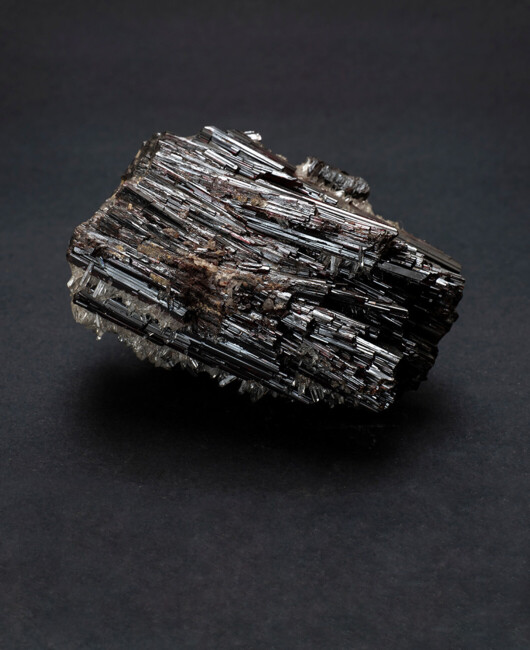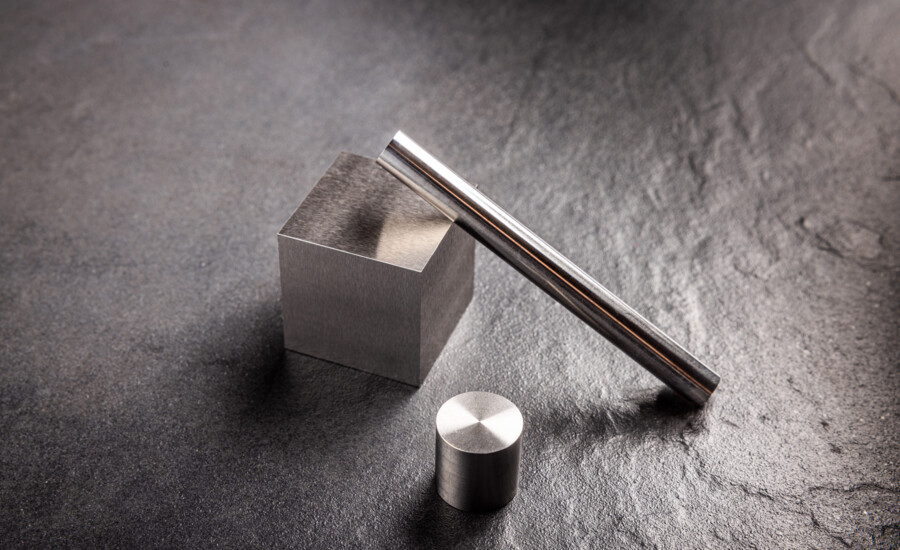Tungsten heavy metals – it’s the strength that counts
Unbeatable: the tungsten alloys WNiFe and WNiCu
Tungsten heavy metal is a composite material with a very high tungsten content. Nickel-iron (WNiFe) and nickel-copper (WNiCu) serve as composite metals. Tungsten-heavy metal alloys can be ferromagnetic (tungsten-nickel-iron) or non-magnetic (tungsten-nickel-copper): This depends on the binder phase of the tungsten alloys. The tungsten alloys are manufactured partly by impregnation and partly by eutectic sintering. In this way, materials with optimal prerequisites for many applications and many branches of industry can be created.
Top 6
The properties of tungsten heavy metal

Purchase tungsten heavy metals & quality from Litty
Highly economical manufacturing is a great advantage for our customers. We at Litty can offer tungsten heavy metal at a price-performance ratio that will convince you! Of course, these advantages are also available if you choose our standard dimensions or semi-finished products and do the finishing yourself.

Good to know
Tungsten heavy metal has many of the properties of pure tungsten, which is characterised by high density and radiation shielding. Radiation shielding is essential for medicine and aerospace. Other applications of tungsten heavy metal include balancing weights, die-casting moulds, mould inserts and ejectors, electrical contacts, resistance electrodes, tool holders, vibration damping boring bars and many more. Tungsten alloys are highly resistant to corrosion and erosion. Due to the binder phases of nickel as well as iron and copper, tungsten alloys are easier to machine.
Tungsten heavy metal alloys
Non-magnetic tungsten alloys
| Designation | W90NiCu | W92.5NiCu | W95NiCu |
| Tungsten content & binder phase | 90% W | 92.5% W | 95% W |
| 6% Ni | 5.25% Ni | 3.5% Ni | |
| 4% Cu | 2.25% Cu | 1.5% Cu | |
| Nominal density | 17.0 g/cm³ | 17.6 g/cm³ | 18.0 g/cm3 |
Ferromagnetic tungsten alloys
| Designation | W90NiFe | W92.5NiFe | W95NiFe | W97NiFe | W90NiMoFe |
| Tungsten content & binder phase | 90% W | 92.5% W | 95% W | 97% W | 90% W |
| 6% Ni | 5.25% Ni | 3.5% Ni | 2.1% Ni | 4% Ni & Mo | |
| 4% Fe | 2.25% Fe | 1.5% Fe | 0.9% Fe | 2% Fe | |
| Nominal density | 17.0 g/cm³ | 17.6 g/cm³ | 18.0 g/cm3 | 18.0 g/cm3 | 17.2 g/cm3 |
FAQs
The alloys are abbreviated with a combination of letters and numbers: “W” corresponds to the chemical symbol of the material tungsten, the number indicates the percentage of tungsten. The letters at the end define the type of composite material, which is a combination of nickel and copper or nickel and iron.
Tungsten alloys have good mechanical and tensioning machinability, which is better than pure tungsten. Good strength properties, great stability and resistance to deformation as well as elongation values of 10 to 15 percent give the material versatility and reliability.
